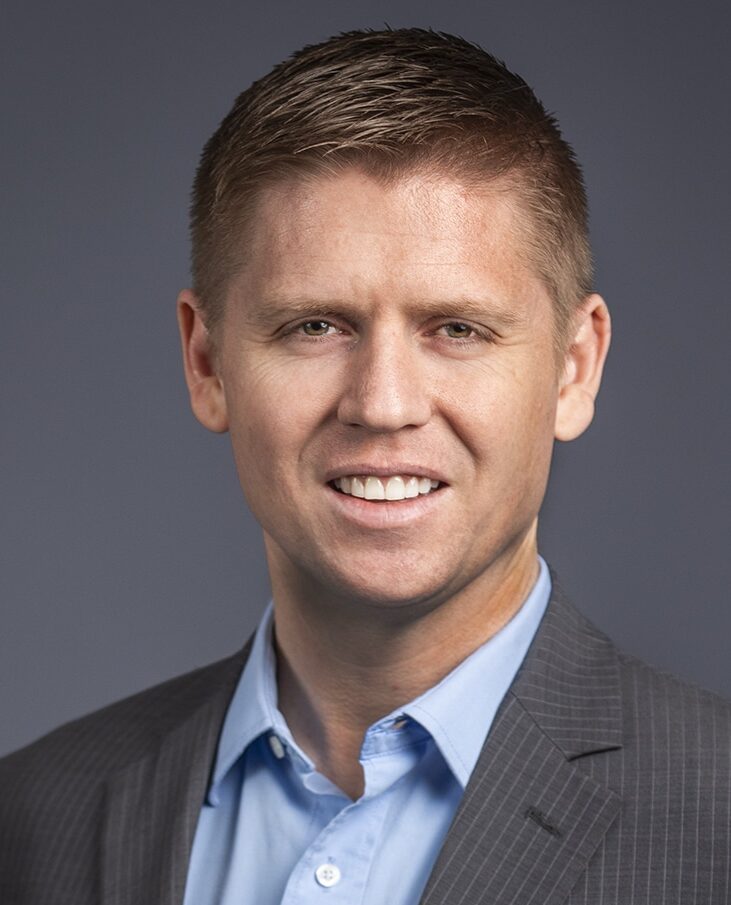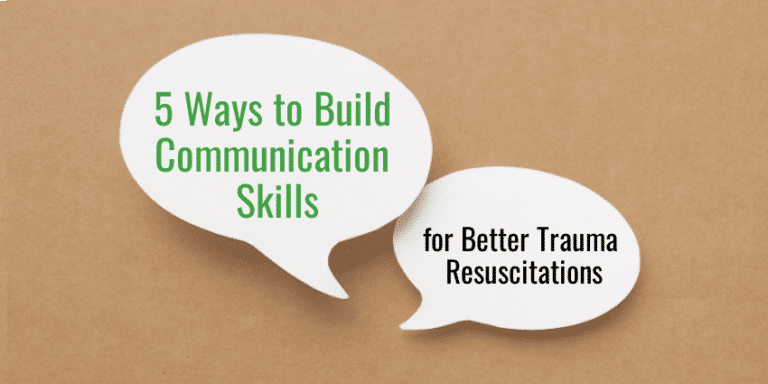Here’s a scenario that may seem all too familiar to many trauma and emergency nurses:
On a “normal” busy afternoon, a truck pulls up to the front doors of the ED and a teenager runs in the waiting room yelling that his friend has accidentally shot himself. The triage nurse quickly grabs a wheelchair and goes out to the vehicle, where a very pale teenage boy is sitting in the passenger seat with blood covering his hand, waist and leg. The teen had found a gun under the seat of the truck and accidentally shot himself, and the bullet had gone through his hand and entered his upper thigh. The triage nurse gets the patient into the chair, radios the team to meet in the trauma bay, and asks for a trauma tourniquet. Upon arrival in the trauma bay, many team members zero in on the exposed bone and tendons visible through the blood on the patient’s hand. Another nurse immediately pulls the tourniquet onto the patient’s bloodied arm and begins to tighten the windlass. The triage nurse says, “His hand isn’t going to make him bleed to death. Get the tourniquet off his hand now and put it up on his thigh until we can assess him better.” Confused, the other nurse points to the very bloody hand, not seeing the torn pants and blood coming from the teen’s leg. The triage nurse very calmly and clearly states again, “Put the tourniquet on his right leg now.” Trusting the triage nurse’s judgment, the nurse immediately moves the tourniquet to the upper thigh and tightens it securely.
This scenario is an example of powerful team communication. During this critical emergency, there was no time for a thorough explanation of femoral blood loss or the potential for great vessel injury in the leg versus the hand. It was the time for immediate care and clear communication. The triage nurse understood that the greatest risk to this patient was the shock of the injury and blood loss from the thigh. And there was enough trust among team members that a clear directive led to immediate action.

Unfortunately, not every trauma or emergency team has the skills to communicate so effectively. When critical needs are not expressed clearly, when team members have not worked together, or when a history of negative interactions exists among staff, communication can be extremely difficult.
Research shows that this is a real problem. A 2016 study published in the British Medical Journal reported that medical errors were the third leading cause of death in the United States. The study attributes many of those deaths to poor judgment, inadequate skills, diagnostic errors — and communication breakdowns.
The good news is that healthcare providers have substantial control over the quality of team communication. In reality, great team dynamics are the result of providers improving their clinical knowledge, curiously questioning current practices and encouraging a culture of speaking up.
Below are five immediate steps all healthcare providers can implement to facilitate better communication and improve the functioning of the care team:
1. Build your clinical knowledge base
A strong foundation of clinical knowledge provides a basis for advocacy in critical situations and fosters respect from fellow clinicians.
For instance, nurses who stay informed about the latest research on internal and external warming techniques during trauma resuscitation can advocate for patients using evidence-based practices. Clinicians who are knowledgeable about current studies, whether through journal articles or conference presentations, will be more empowered to address warming concerns for patients at risk of shock.
Achieving board certification is an excellent way to build and maintain clinical knowledge. (Full disclosure: As many of you know, I am the director of professional development for the Board of Certification for Emergency Nursing, which offers certification in six nursing specialty areas.)
Board certification is respected by others in the medical community because it demonstrates mastery of the knowledge needed to work within a key clinical role. Maintaining certification also requires a commitment to continuous education.
2. Purposely take on uncomfortable situations
Stepping into unfamiliar territory will allow you to hone your communication skills and communicate effectively in future situations.
For example, a lot of healthcare professionals are willing to step into the trauma bay to assist during a pediatric penetrating trauma — but oftentimes we see that few people are equally willing to speak to the family about the treatments provided and the child’s prognosis. It’s difficult and uncomfortable, yet it can hone the provider’s ability to communicate clearly, listen carefully and build the relationships that are so vital to trauma care.
Other opportunities to get out of your comfort zone are learning how to discuss end-of-life care with patients and their family members or simply asking for feedback from a respected colleague.
Taking on uncomfortable situations shows a willingness to step into unfamiliar territory that is often respected by peers who easily shy away from it. This can translate into greater respect during communication as well, since nurses who take on uncomfortable situations are often seen as people who are willing to lead in all aspects of care.
3. Develop your emotional intelligence
Many healthcare professionals have a great deal of clinical intelligence but do not focus as heavily on improving emotional intelligence. Emotional intelligence (EI) is a key driver of the empathy and self-awareness that are critical to communicating effectively with others.
Say that your ED receives a tree trimmer who has a partially amputated arm from a chainsaw injury. This patient definitely requires immediate care to control the bleeding and care for the partial amputation — and, here, clinical knowledge is indispensable. However, this patient is also likely worried about how they will pay their bills, how they will provide for their family, whether they will be permanently disfigured and many more concerns. Healthcare providers with strong EI are able to recognize this dimension of the patient’s injury. Immediately empathizing with the patient, the clinician will be more able to provide support and resources to address these concerns.
Emotional intelligence also supports communication at the team level. Recognizing your own emotions helps you know when to step back and allow others to take a lead in communication. One analogy often used in medicine is a sports team. In football, everyone may want to be the quarterback and call the shots, but at the end of the day only one quarterback is on the field. The other team members all have their extremely important roles and the team can’t function without them. However, many people get hung up on “calling the shots” by thinking that the team leader, charge nurse, physician, etc., is the sole person that should direct care.
4. Look outside healthcare for proven tools
Although we may receive very targeted feedback in the trauma bay or the ED, clinicians who learn communication strategies from other industries are often able to view communication obstacles in a different way and gain the advantage of a fresh perspective.
David Epstein, author of Range: Why Generalists Triumph in a Specialized World, argues that people with diverse experiences in multiple areas have a better perspective than those who specialize in one area and have few skills outside of that area.
Education in the healthcare world is often centered around clinical skills. But clinicians can learn powerful strategies for communication from experts in public speaking, business management and other disciplines. Learning from these experts, rather than healthcare leaders alone, provides a different perspective that allows the clinician to recognize strategies for building relationships and trust.
Gaining a range of perspectives on communication can help trauma and ED nurses build rapport with the mechanic who crushed his hand, the dancer who broke her ankle, or the banker who was involved in a motor vehicle collision on the way to work.
5. Strengthen your network of relationships
Networking is a valuable form of improving relationships and building a group of allies who can provide mutual aid during a crisis.
As we all know, trauma care is not just what takes place in the trauma bay — it is an entire system that supports a person who has experienced a traumatic event. This system includes everyone from environmental services to orthopedic specialists to rehabilitation providers.
Trauma and ED nurses should make a point of networking with individuals in all these specialties and departments. This will build trust and relationships that ultimately improve communication and outcomes.
Consider getting involved in intrafacility workgroups or unit-based councils. Willingness to collaborate across the spectrum of care shows a dedication to improving the trauma program.
Set goal to improve
All of us in trauma and emergency healthcare have goals for improving as clinicians. In addition to these goals, I recommend setting personal and work-related goals for improving your communication skills and build rapport within your team.
Improving your communication skills will bolster your competence and confidence in the workplace. And building rapport with others will lead to trust, which allows individuals to speak out without feeling ashamed or embarrassed. In healthcare, this could lead to improvements in morbidity and mortality.
Michael Dexter, MSN, RN, EMT, CEN, CFRN, CPEN, CTRN, TCRN, CCRN, CNL, is the director of professional development at the Board of Certification for Emergency Nursing (BCEN).

